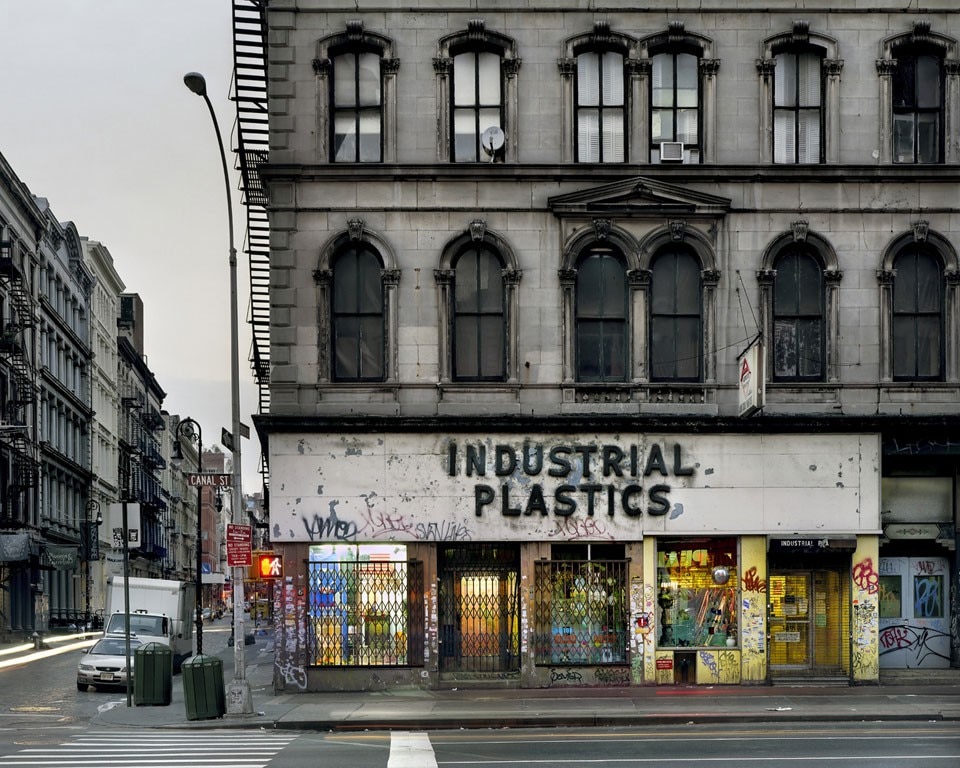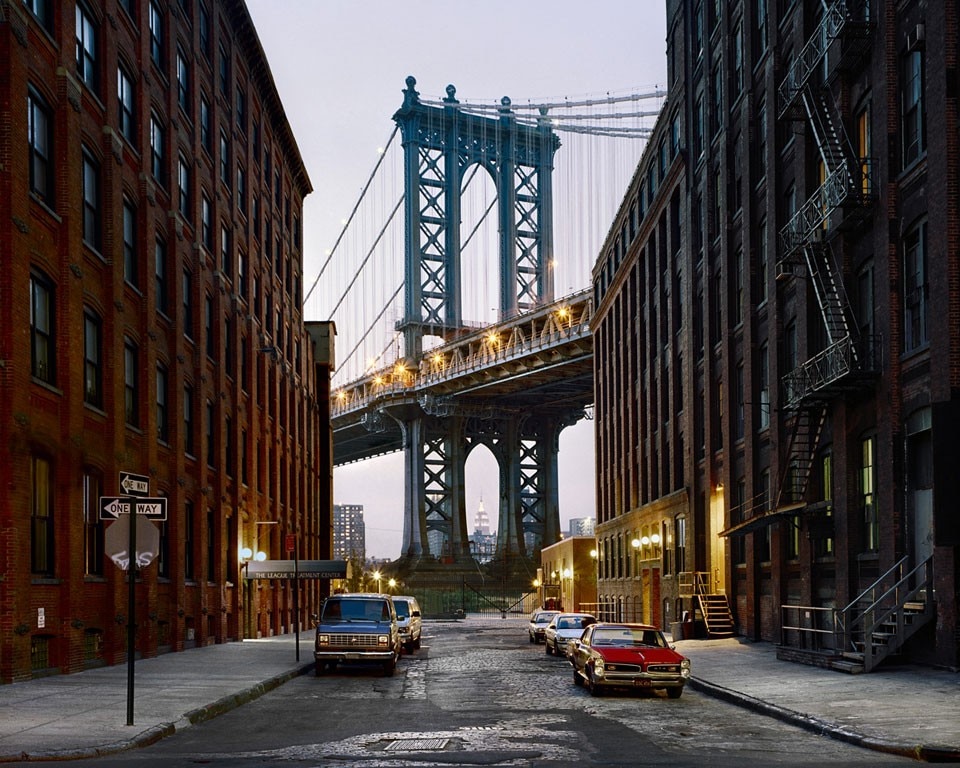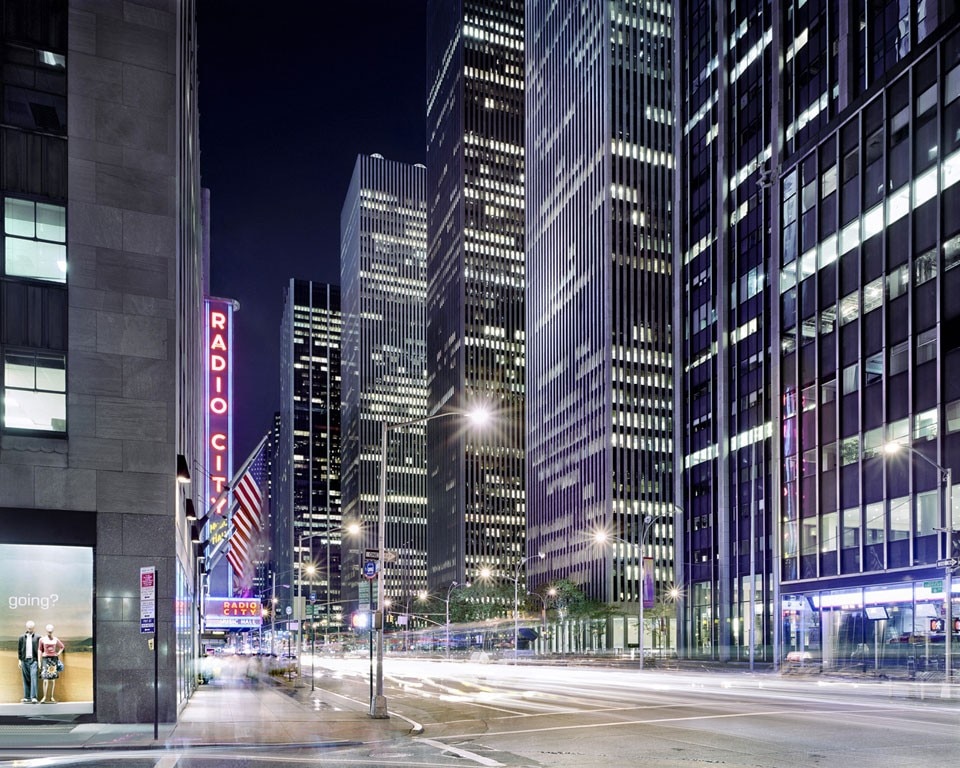In 1999, when Luca Campigotto arrived in New York to photograph in and around the city, his image of it, like most of ours, was shaped by old photographs and movies that reverberate in pop culture and the collective imagination. Venetian-born, Milan-based, and with a degree in modern history, Campigotto was well aware of the ways that photography, a medium he describes as the “supreme instrument of nostalgia,” not only documents, but actively shapes our perception of and experience in cities. In work made on that initial visit and during subsequent ones over the past dozen years, Campigotto’s interests in architecture and his nuanced investigations of space and place have led to this collection of beautiful and paradoxical photographs. In each one, a palpable, almost visceral sense of presence seems at odds, yet strangely in sync with the melancholic sense of absence that also permeates the pictures.
Neither a journalist nor a story teller, Campigotto is, in fact, a scene shaper. He makes no claims to this being an encyclopaedic project and works instinctively, as he has described it, to photograph “the container of events”. Rather than construct and then follow a strict conceptual framework — as Thomas Struth did for the black-and-white street views he made in New York in the late 1970s — Campigotto responds to the city subjectively. Many of the photographs in Gotham City were made in the lower third of Manhattan that stretches from Midtown to the Financial District. Each one is rich with formal and graphic incident: the march of elegantly regimented building façades, the tracery of fire escapes and scaffolding that cling to buildings, the spectral effects triggered by multiple light sources, and the jittery juxtaposition of all sorts of messages and signs.

One of the more enduring stereotypes about New York is that everyone and everything in it is awhirl. But in this work — with the exception of the few pedestrians, traffic lights we know will blink on and off, and the ghostly trails of head-and-tail lights that appear in some images — everything is stilled. The photographs seem, at least at first, to focus on and revel in the visual spectacle of a metropolis. But a sense of sobriety resides in these photographs, too. While they reflect something of the city’s bravado and anything-can-happen-here promise, they cannot quite shake the fact that a once-smug city of go-getters, in these post-9/11 years, feels a little less full of itself, chastened, vulnerable.
Of course, New York and brash New Yorkers alike pride themselves on being survivors. The city — grimy, crime-ridden, on the verge of bankruptcy — nearly went under in the 1970s, then bounced back. Campigotto’s photographs, made before, during, and after the financial crisis of the last decade, often feature areas of the city that have been zealously repurposed and remade. New York neighbourhoods previously dismissed as culturally or geographically undesirable are now teeming with the condos, co-ops and life-style purveyors that recast the look and redraw the map of hipness. The cast-iron lofts buildings in Soho, Tribeca, and the Garment Center, where piece workers once toiled, have become the homes of millionaires. “Old façades” as social critic Richard Sennett wrote and these photographs hint at, “hide new values and lifestyles”.

If Manhattan is no longer a melting pot, but a place for the rich, as class-conscious or priced-out cultural observers point out, if the city is in danger of becoming a theme park version of itself, it still remains fertile ground for photographers fascinated with urban fact and fantasy. In one frame of the comic strip mentioned earlier, Batman and Robin, up on a rooftop, scan a sketchy panorama of towers and bridges that looks just like Manhattan. A caption describes them as “two mantled figures... posed against the inky sky that forms the backdrop of the great stage that is called Gotham City”. Taken together, the images in this book suggest that as Campigotto surveys New York, he, too, sees it as a succession of theatrical spaces or movie sets.
The possibility for narrative that is embedded in these photographs is reinforced by the fact that Campigotto often works at night when, he says, “the outcome is unpredictable. The lights, the contrasts, the colors are more interpretive... Night makes evocation more plausible”. And so does the post-production work Campigotto subsequently does on the images themselves. After they are shot, he carefully rebuilds them, recalibrating their color saturation so that the subtlest details that would have disappeared in the shadows begin to assert themselves. Once they do, something odd and magical is set in motion. The not-quite-naturalistic palette of these images makes the atmosphere they depict feel immersive. Coupling the camera’s forensic gaze with a decidedly romantic sensibility, Campigotto creates extraordinary and haunting photographs in which the present and the past, and desire and nostalgia coexist. From one image to the next, we’re reminded of the New York’s legendary hold over those who build, live in, visit, or imagine it. And thrilling as they are, these canny photographs speak to something else, something unexpected — the big city’s indifference and its power to go on without any one of us. Marvin Heiferman




